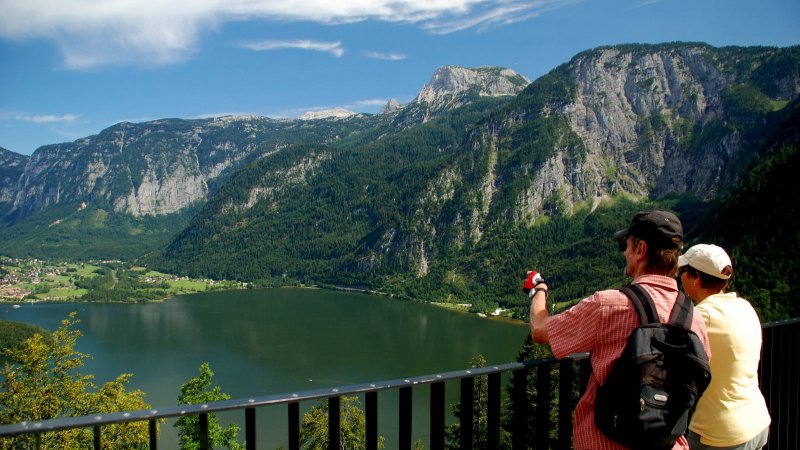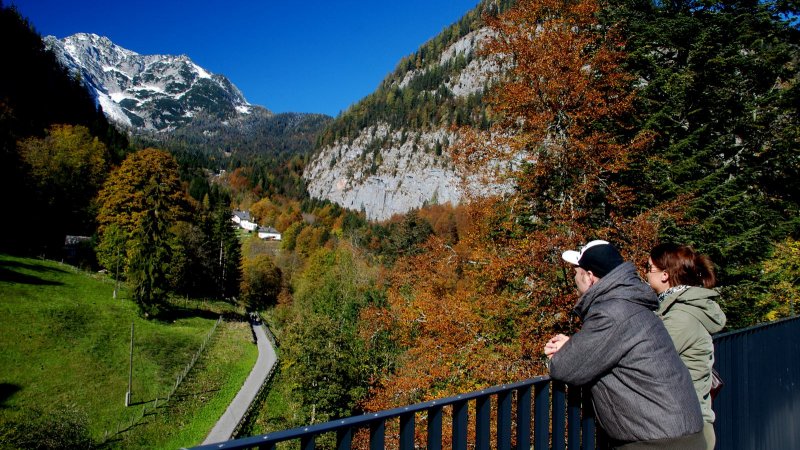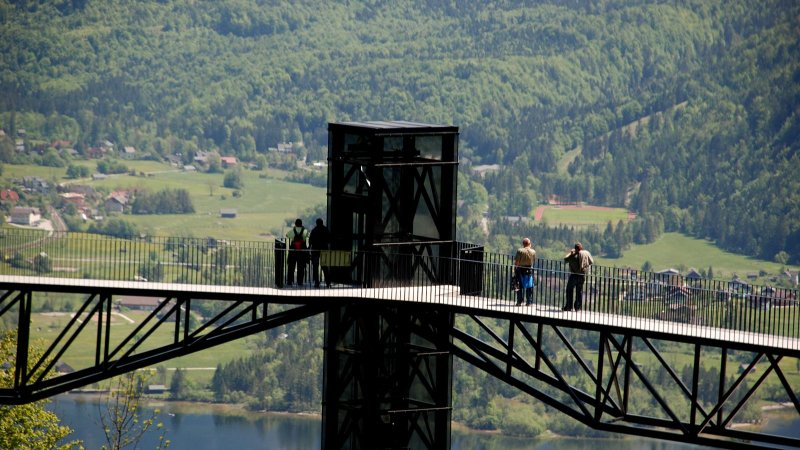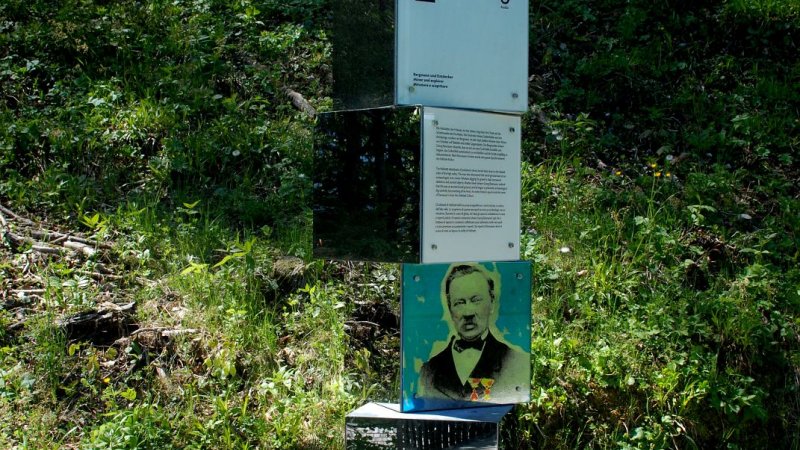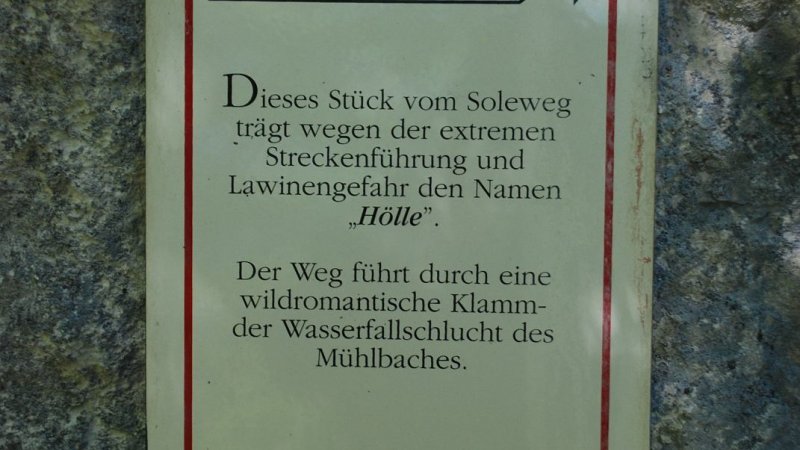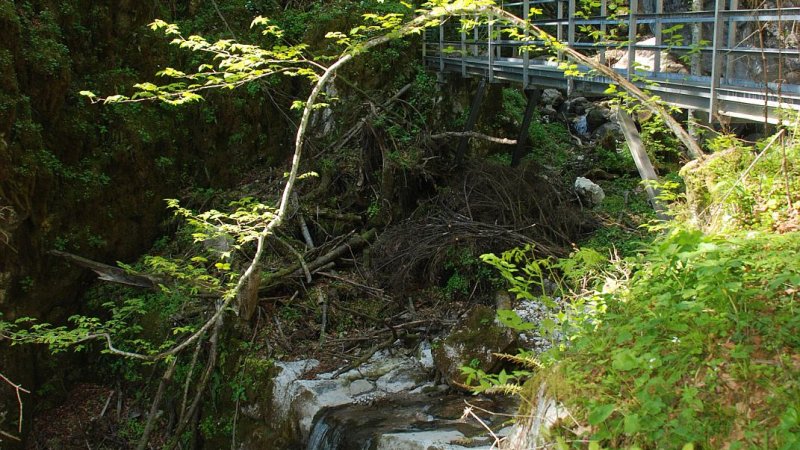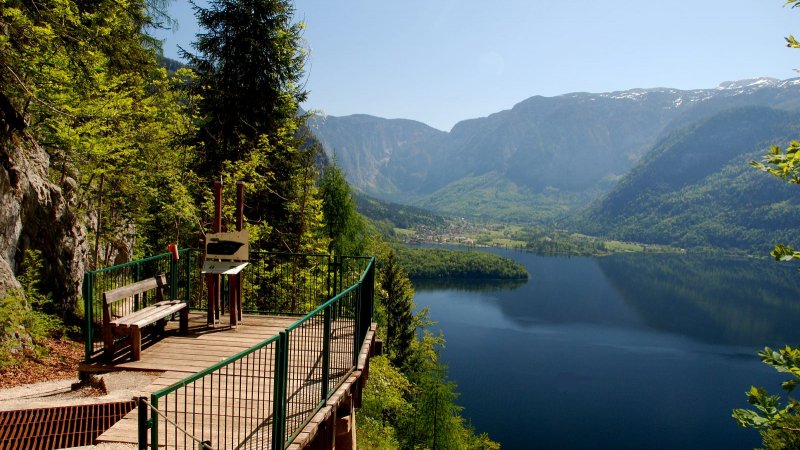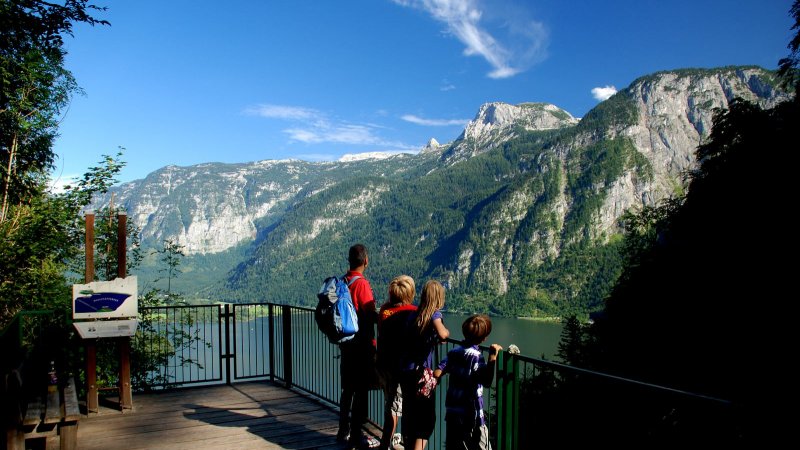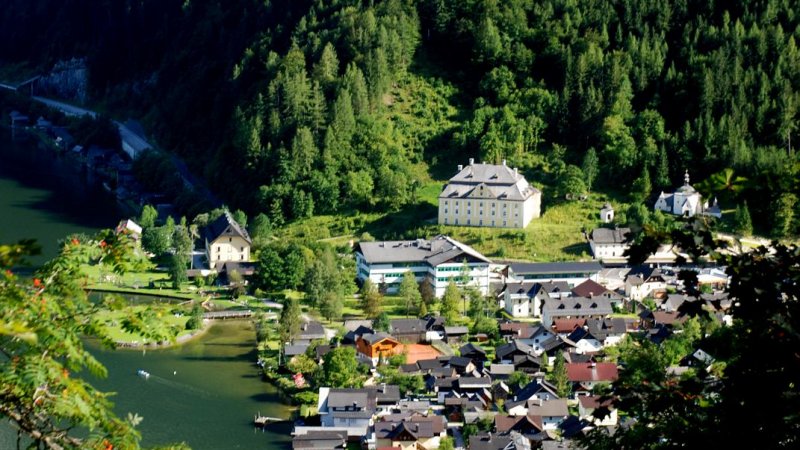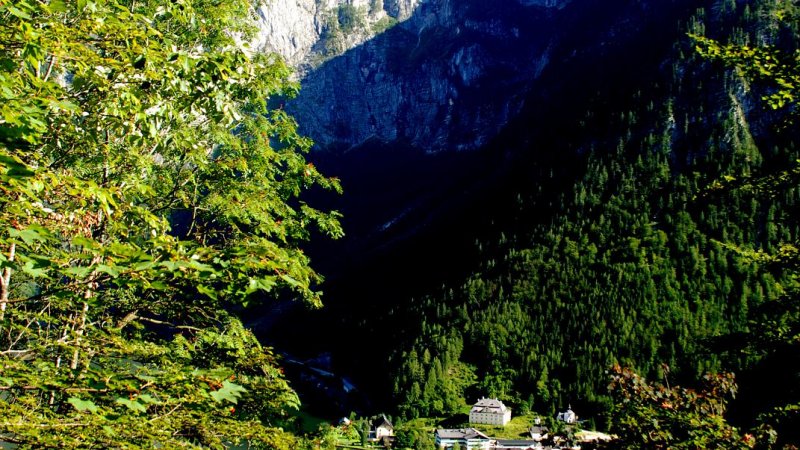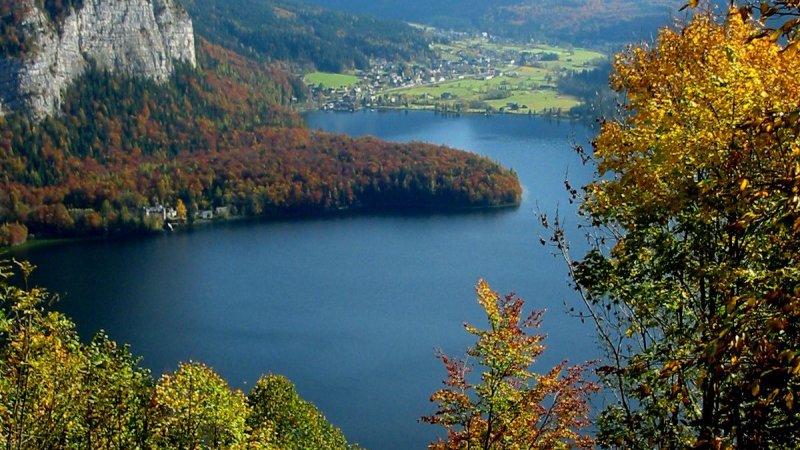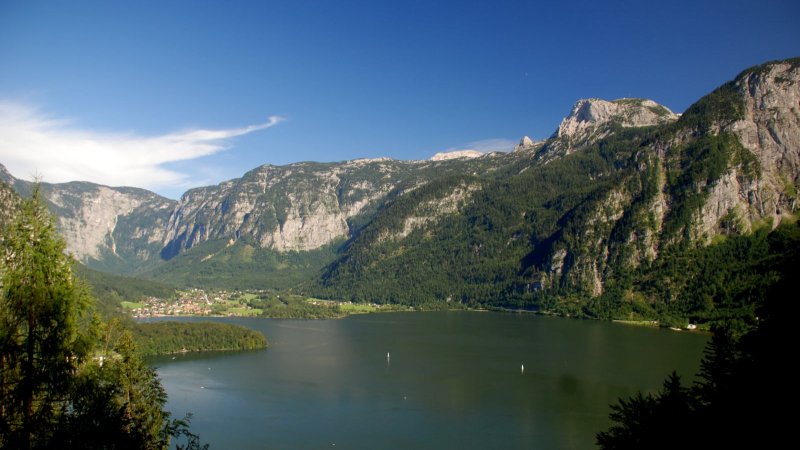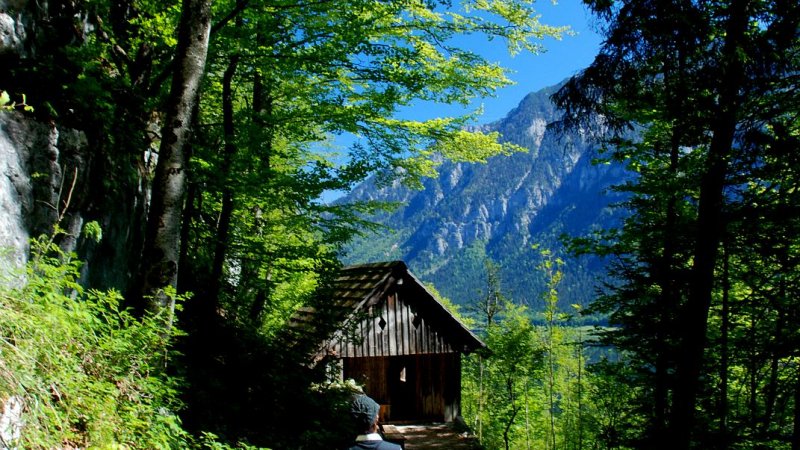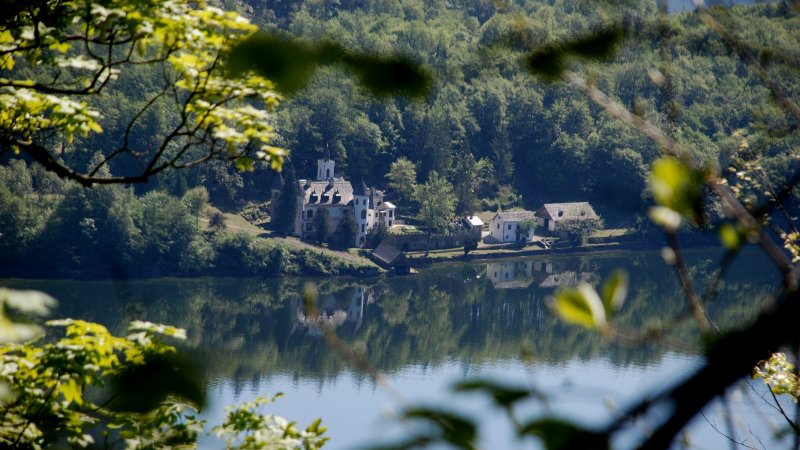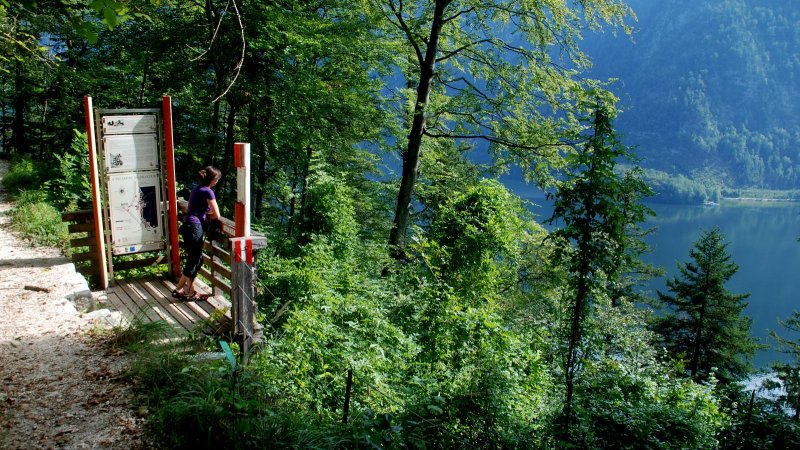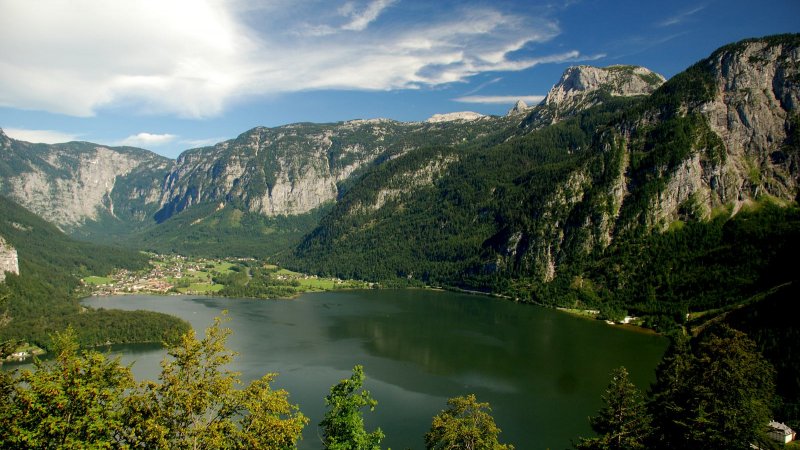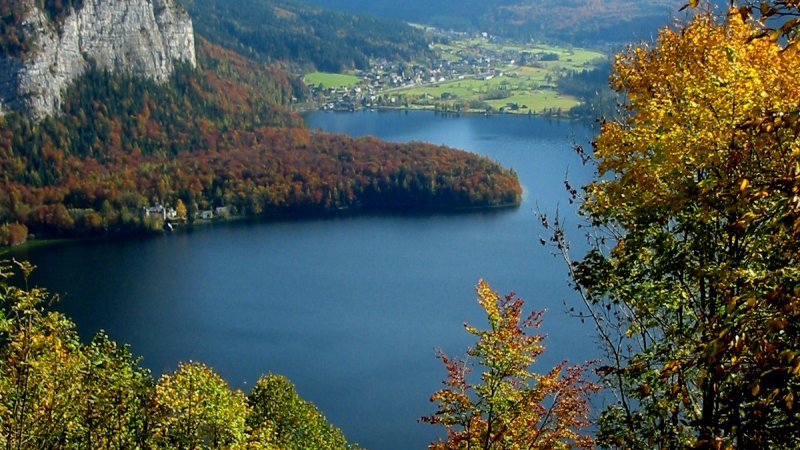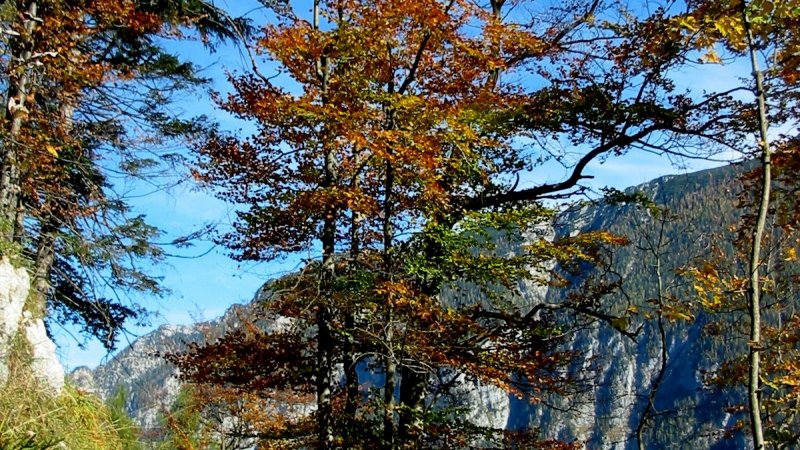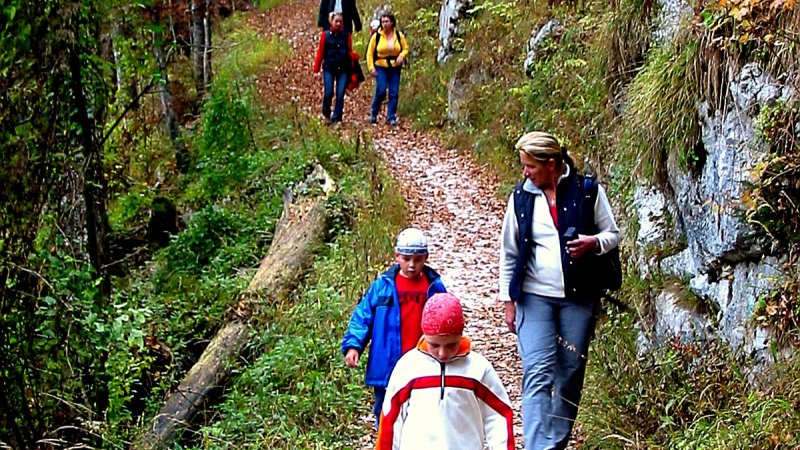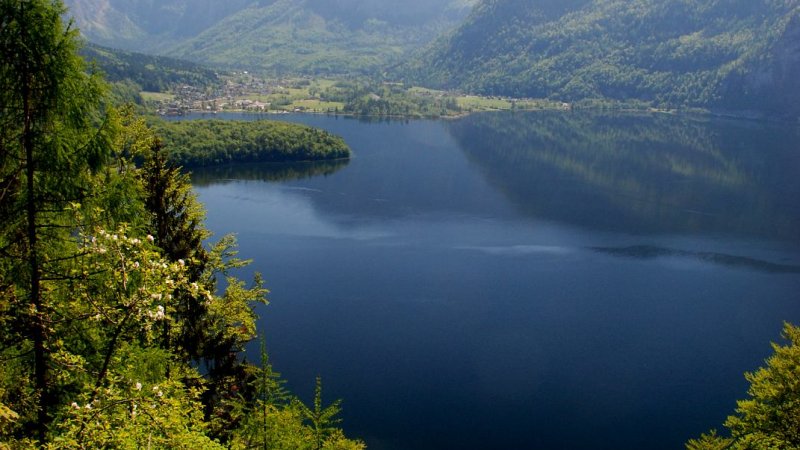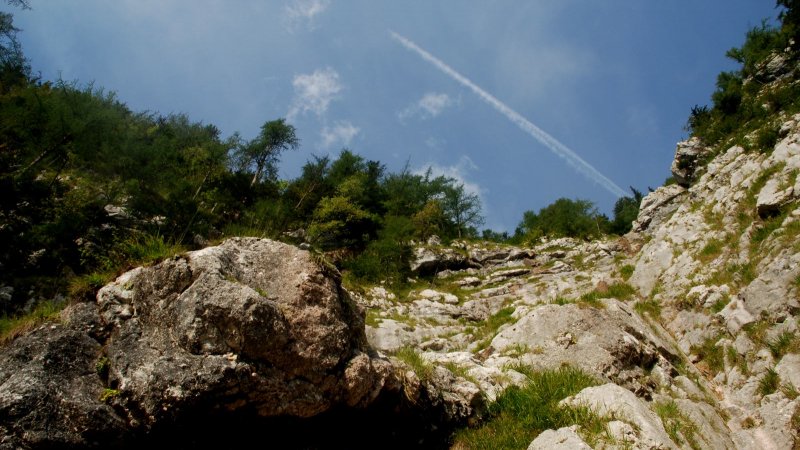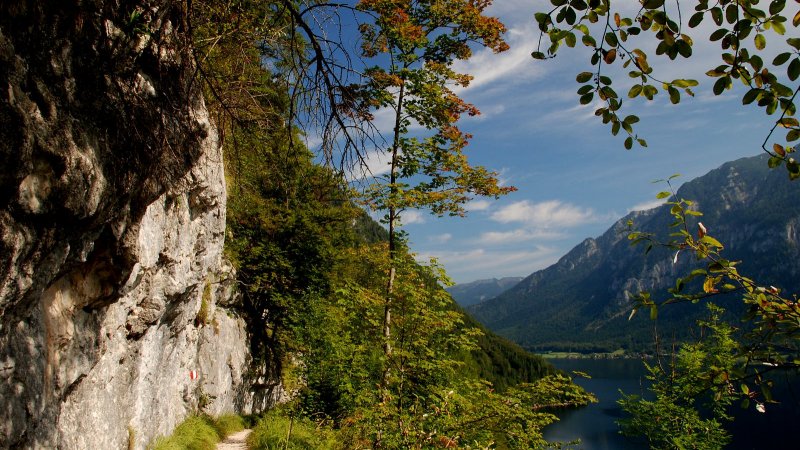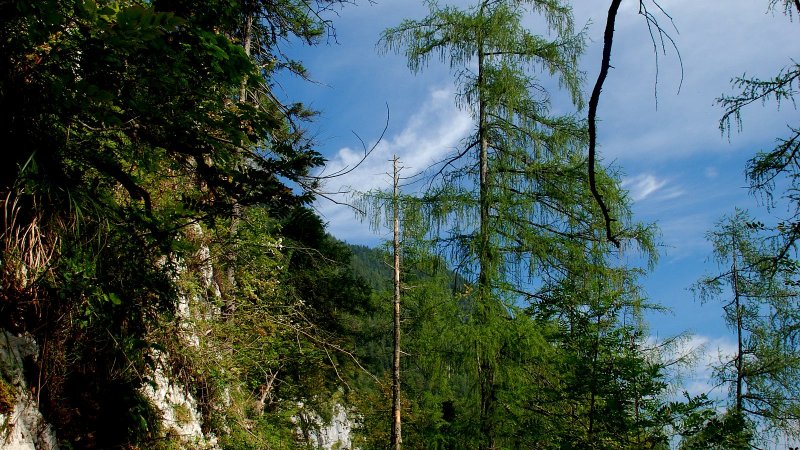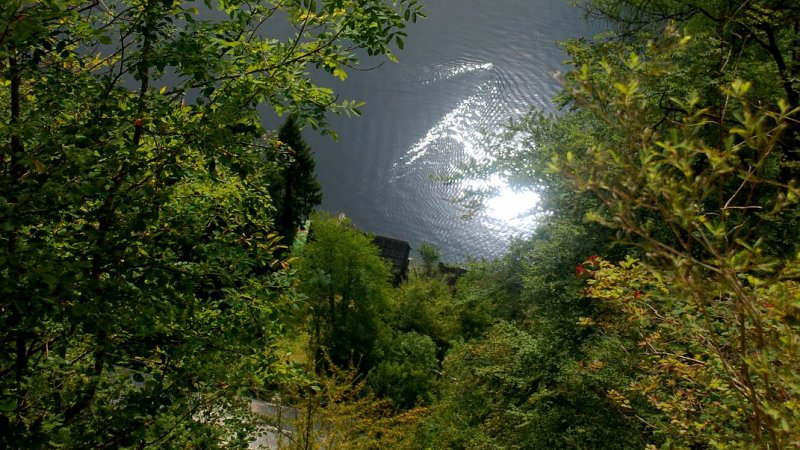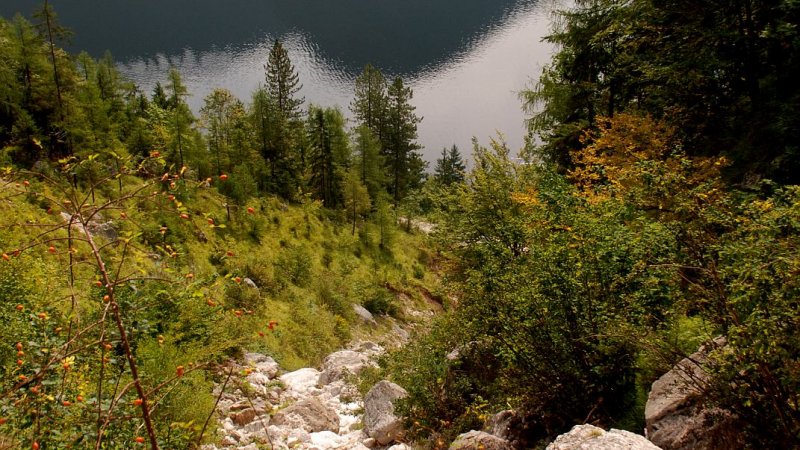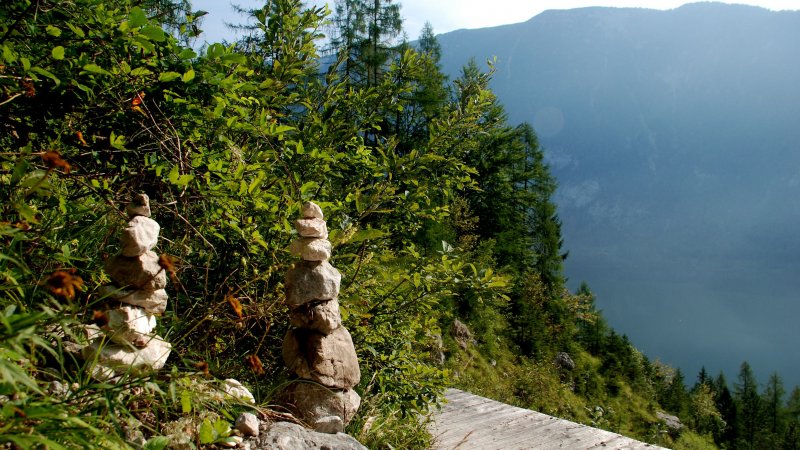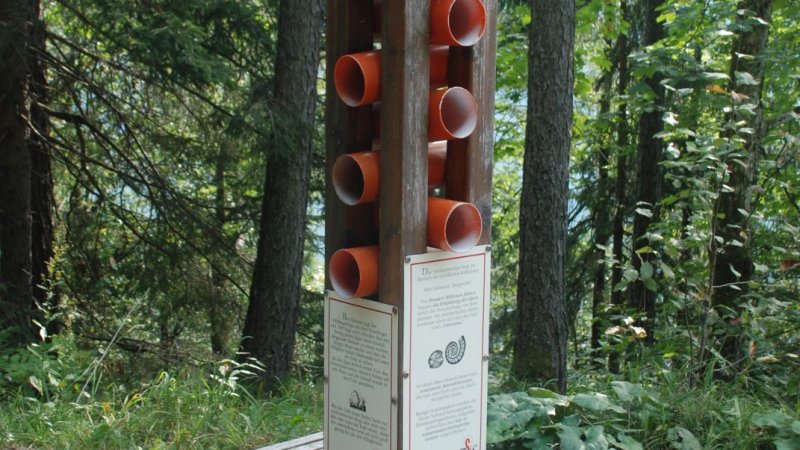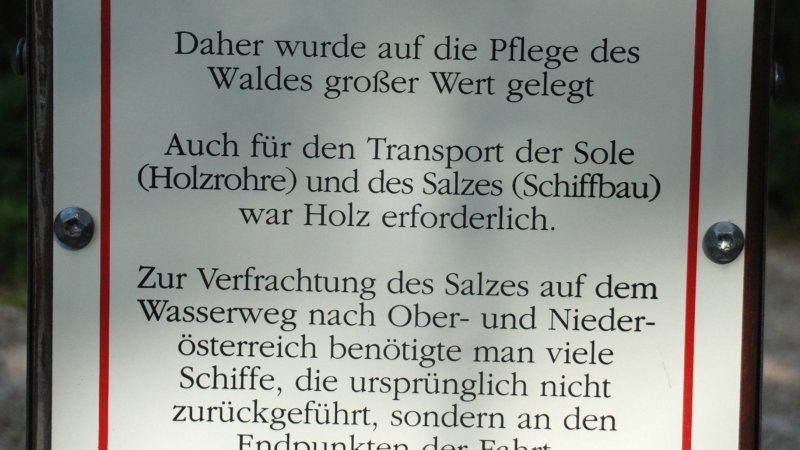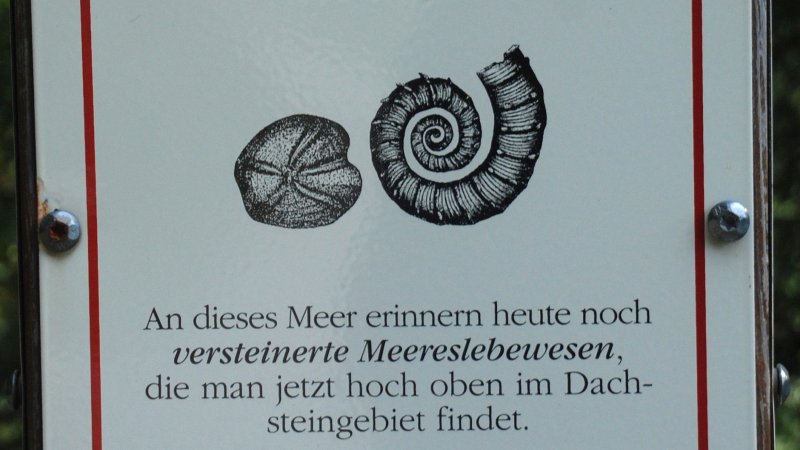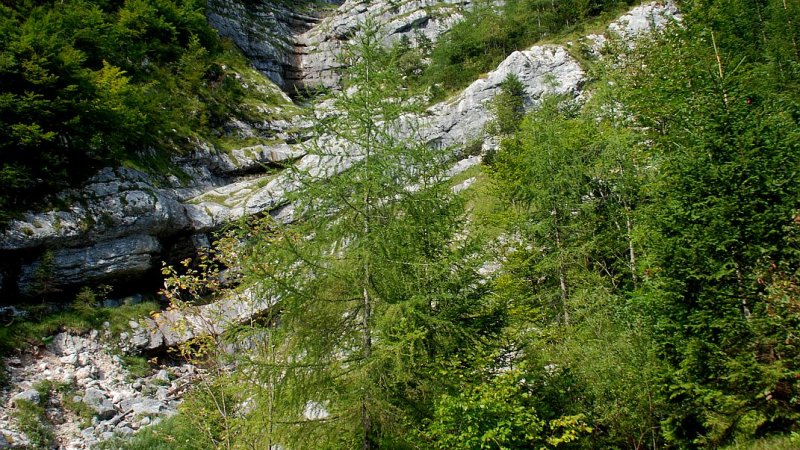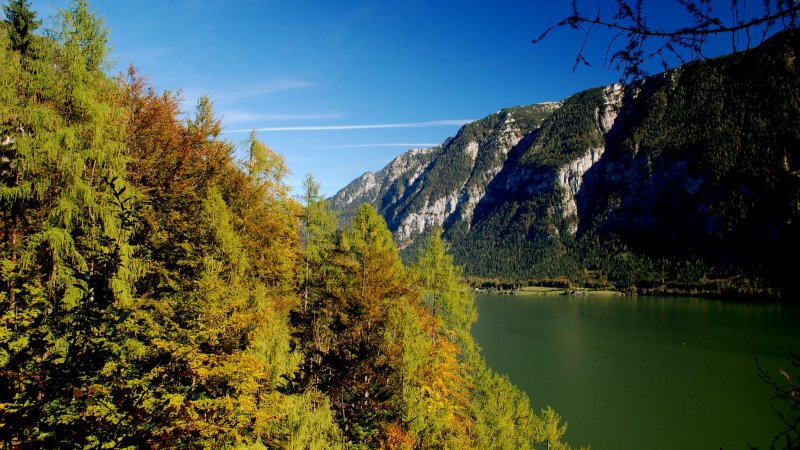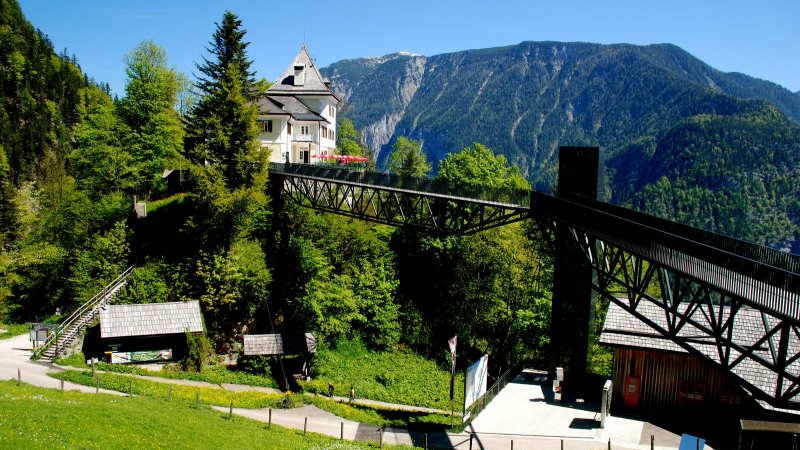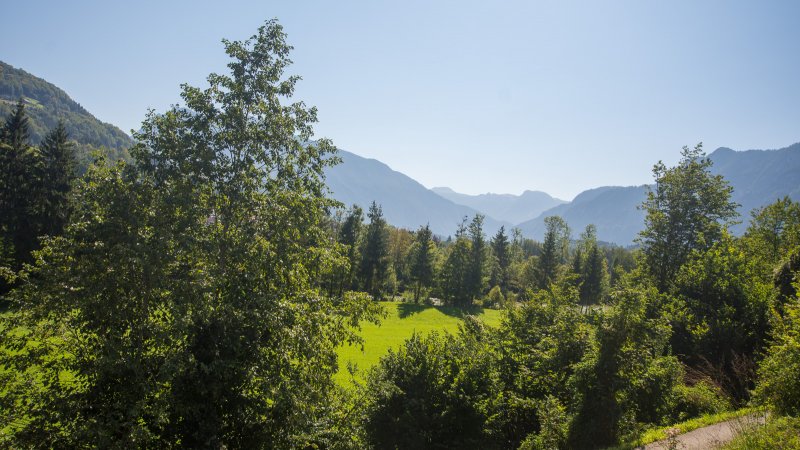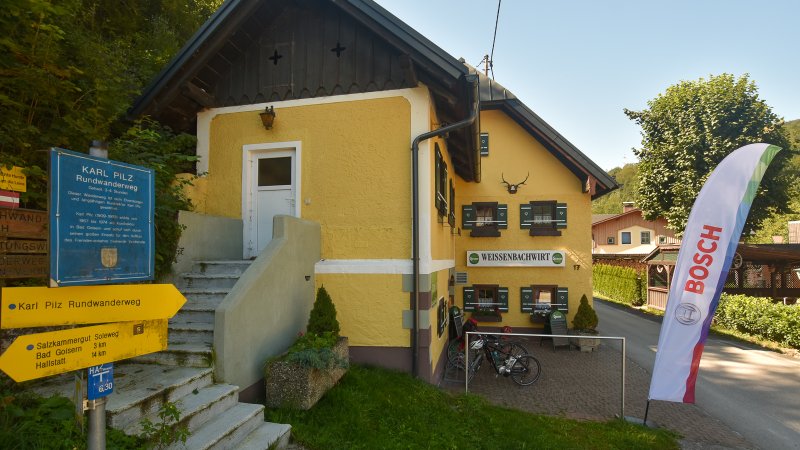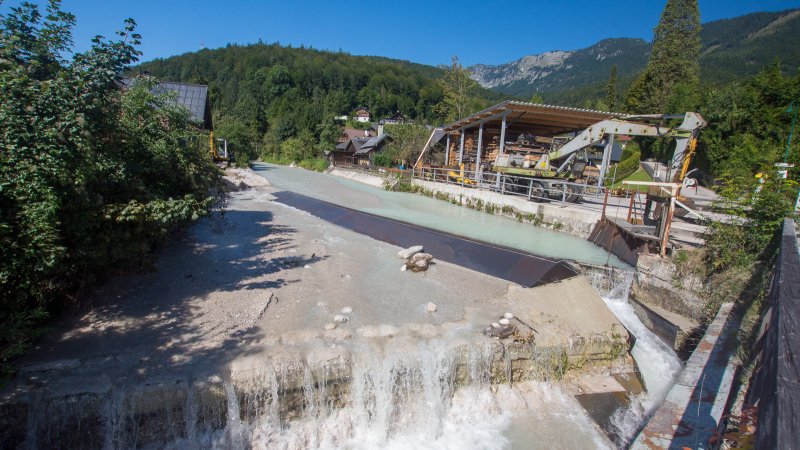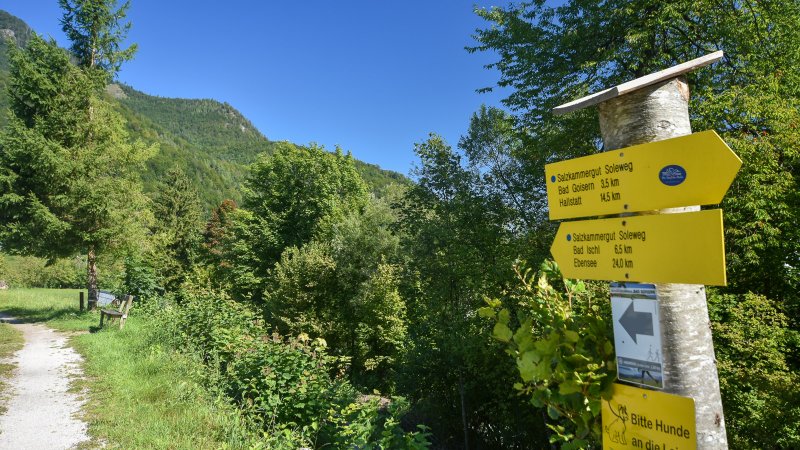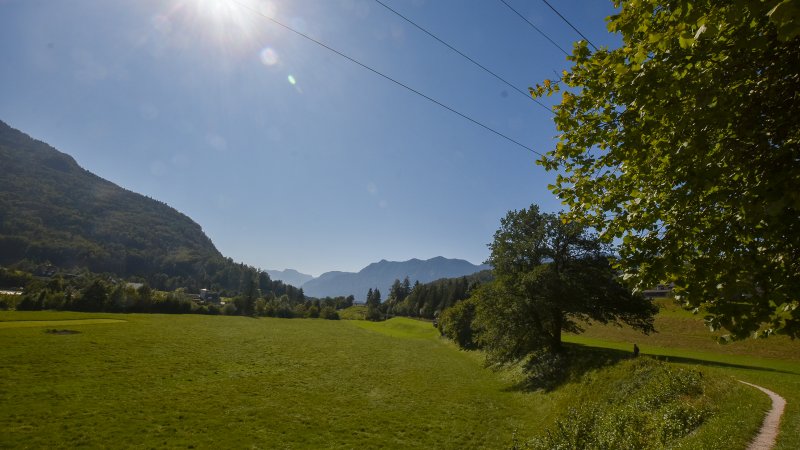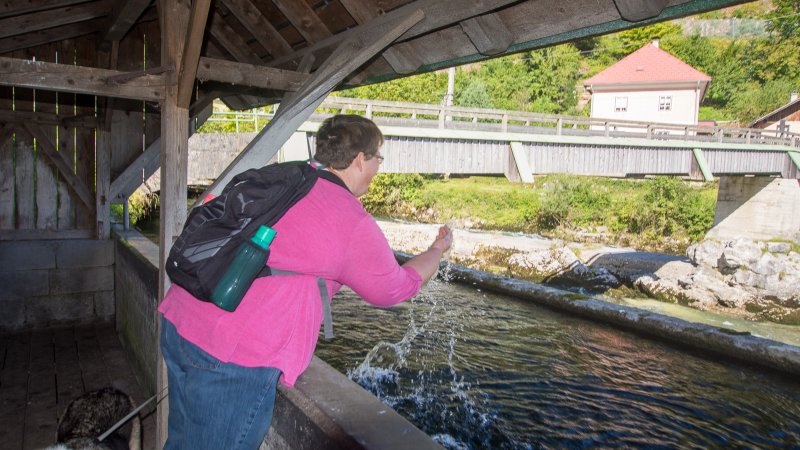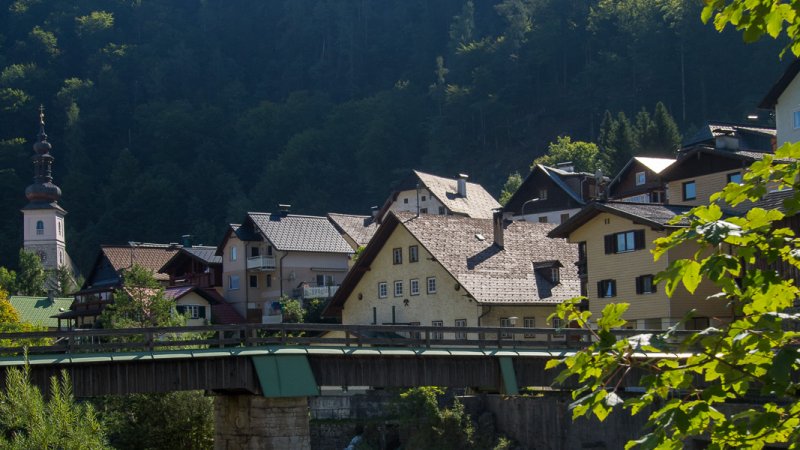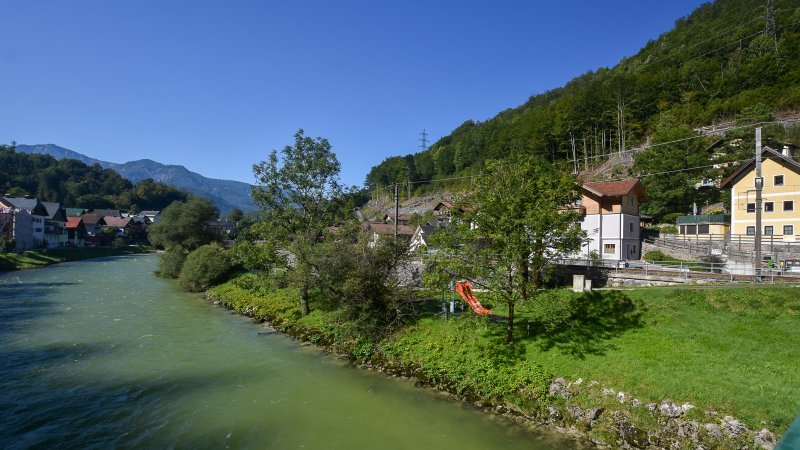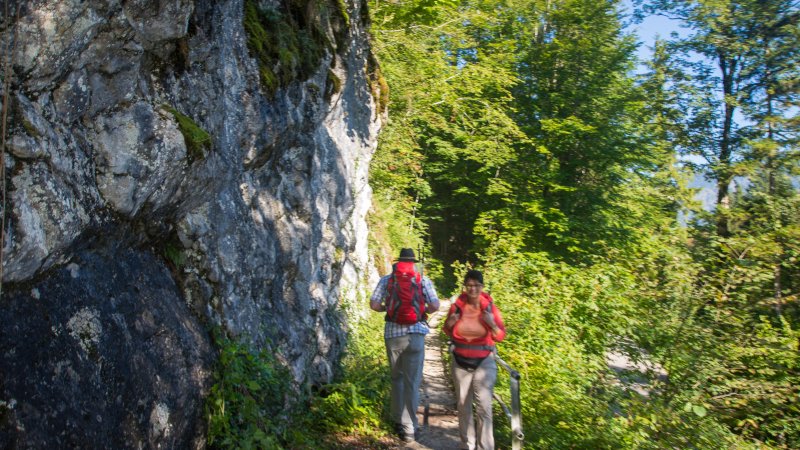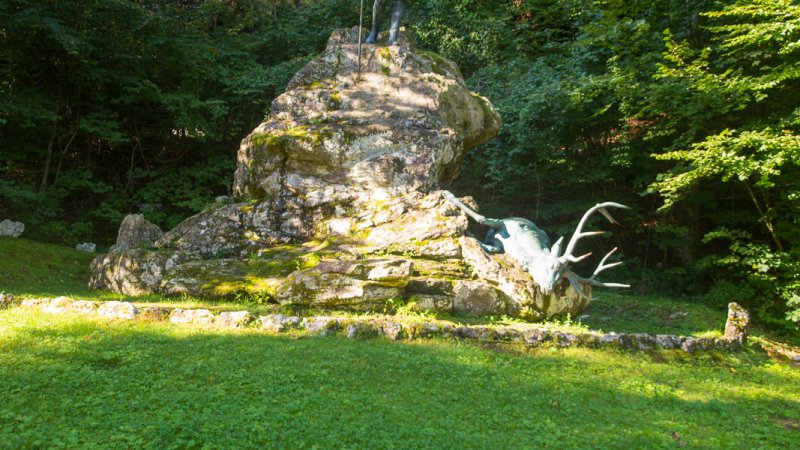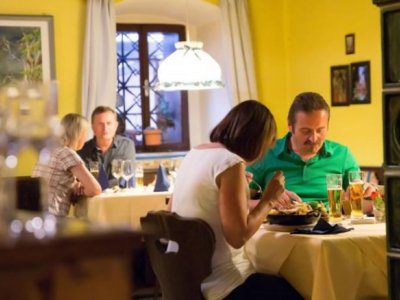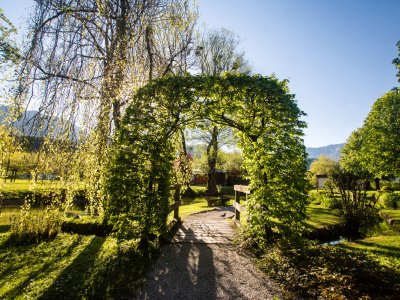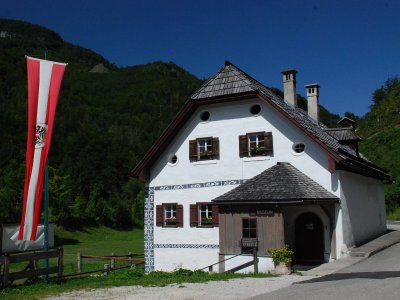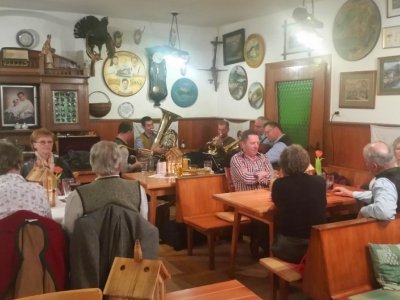The historical Brine Trail
Hiking News
Note for hikers: "Salzkammergut Soleweg"
Hallstatt - Steeg section closed
Steeg - Ebensee open
Dear hiking enthusiasts and nature lovers, the "Salzkammergut Soleweg" between Hallstatt and Ebensee am Traunsee remains closed in sections. This means in detail: The path from the Salzberg (name of the mountain) in Hallstatt to the Bad Goiser district of "Steeg" is currently closed. The duration of the ban is not foreseeable. Please do not climb over the barrier. Walking on the path is life-threatening due to recurring rockfalls!
Steeg - Ebensee open
Good news for hikers: the path from the Goiser district of "Steeg" to Bad Ischl and on to the Traunsee to Ebensee is freely walkable.
Alternative Routen
If you would like to hike from Hallstatt to Bad Ischl, we can recommend the "East Bank Hiking Trail". Take the ferry to Hallstatt train station, then continue on foot on the trail in the direction of the Bad Goiser district of "Untersee" and from there in the direction of "Steeg". From here you will reach the "Soleweg". The walking time for this section is about 3 hours.
We hope you enjoy hiking in the Salzkammergut
Your Editorial Team
Hiking along the world's oldest pipeline
Some call it the "Salzkammergut Soleweg", others call it the "Soleleitungsweg". And the locals simply call it "Strähn". Whatever you call it, the path between the ancient salt mining town of Hallstatt and Ebensee am Traunsee is one of the most beautiful hiking routes that the Salzkammergut has to offer.
Section closed
Unfortunately, the section between Hallstatt and the Bad Goiser village of Steeg is currently closed due to rockfall. It is still unclear when the path will be reopened here.
The entire trail at a glance
However, we have concentrated on the entire route between Hallstatt and Ebensee - regardless of which sections of the route are currently closed. Please inform yourself in good time before the hike about possible trail closures at the local tourist office. Due to the good connection to numerous bus and train stops (ÖBB) near the trail, the trail can also be hiked in various smaller stages. And now more about the centuries-old history of this unique hiking trail.
Hiking on the Salzkammergut Brine Trail
The Brine Trail is one of the most beautiful hiking trails in Austria and leads along Lake Hallstatt and the Traun River between mountains and villages through the Inner Salzkammergut. It follows the pipeline from Hallstatt to Ebensee, which was first put into continuous operation in 1607. Since the brine runs down from the Rudolfsturm with a slight gradient, the path leads steadily gently downhill. The Soleweg is about 40 km long in total (almost the length of a marathon) and offers a wealth of topics typical of the area in four stages of about 10 kilometers each...
The oldest active industrial pipeline in the world
The salt is leached out of the mountain with water in the salt mine near Hallstatt (in the show mine you can trace over 7000 years of salt mining). This very salty water (33 percent salt) is called "brine". Only the Dead Sea contains almost as much salt at 30 percent. The brine is heated in the saltworks, the water evaporates and the salt remains. In the past, wood was needed for this, but since this soon became scarce in Hallstatt, a new saltworks was built in Ebensee on Lake Traunsee. In order to transport the brine from the mine to the saltworks, a brine pipeline was built from 1597 onwards from 13,000 tree trunks (spruce and fir) inserted into each other. In 1607, the brine pipeline was put into operation. This is how the oldest pipeline in the world was created, which is still active today. Today, the brine flows through plastic pipes. The path over it is called the Soleweg, popularly known as the "Strähn" (or "Strehn").
Salt – a valuable raw material
Salt has countless applications. In addition to the different types of table salt for humans, there is also lick salt for animals. No book without salt: Salt is needed to produce the paper fibres. No soaps without salt, but also no lipsticks and other cosmetics. There would be almost no modern textile fiber without salt. Aluminium, leather and rubber are also produced with the help of salt. Our cars would have no gasoline, as the wells for the oil are made more resistant with salt. Today, about 200 million tons of salt are produced worldwide. Only after 250 million years would we have produced as much salt as there is in the oceans. If all the salt in the world's oceans were leached out and scattered evenly over the mainland, this would result in a layer of salt almost 100 meters high!
Newly staged from Steeg since summer 2024
Since the summer of 2024, the path between the Bad Goiser village of Steeg and Ebensee on Lake Traunsee has been restaged. At numerous stations, various information boards on the history and culture of the Salzkammergut, which is inextricably linked to salt and wood production, await you. If this is not a reason for eventful hikes?
1st Stage: „Mountains, forests and lakes“ from Hallstatt to Bad Goisern
You can get to the Rudolf´s Tower with a funicular from Hallstatt from where you have a spectacular view on the whole of the lake and surrounding landscape. From there, passing the prehistoric grave yard you find the salt mine entrance where you can take a tour and discover the history and fascinating world of salt miners. The path winds through the "Höll" passing rough rocks into the "Bannwald" forest. Along this path you will have a spectacular view onto the lake Hallstatt. You pass the Gosauzwang over a high bridge crossing the Gosaubach stream and passing the pipes in Steeg to Bad Goisern, the home of the "Goiserer", the world famous original handmade mountain shoe.
2nd Stage: „The locals of the Salzkammergut“ from Bad Goisern to Bad Ischl
From the Goiserer Bridge you leisurely pass along meadows and little woods through the Bad Goisern valley. In Lauffen you can hear the roar of the "Traunfluss", a spot where many of the salt ships would capsize. After a hike through the beautiful woods you will reach the hunting statue of our emperor. Bad Ischl is well known for the healing qualities of the salt and “Salt prince“ because of the love story between the emperor Franz Josef I and his beloved "Sissy".
3rd Stage: „Traffic“ from Bad Ischl to Ebensee
From the tourist information office in the centre the path leads past the train station across the Steinfeldbrücke Bridge to the right side of the river Traun through the estates Steinfeld and Brandenberg. You continue to walk for 2 kilometers on the bike track besides the main road. At this point the present day Brine-Pipeline heads below onto the main road. Crossing the Mitterweißenbach Bridge the path goes to the right side of the river Traun along a gravel road passing a small estate and through the woods to the Langwieser Steeg. Then crossing the Traun and the main road behind the former guest house you will find the feeder line to the original route and the 4th stage of the Brine-Pipeline Trail from Langwies to Ebensee.
Immediately after Langwies the Brine-Pipeline Trail leaves the main road continuing along the mountain onto Ebensee. The path passes romantic farms, meadows, small estates and several flowing brooks. Today, the salt factory is on the other side of the river Traun. There are benches on the route to stop for a break. The local history useum.ebensee is a must it’s at the end of the Brine-Pipeline Trail and was former seat of the salt works administration.
Safety Tips for Hikers
Admittedly, the landscape of the UNESCO World Heritage region of Hallstatt Dachstein Salzkammergut is the absolute pinnacle for hiking fans, mountain enthusiasts and nature lovers—unforgettable tours to incredibly beautiful mountain lodges and meadows, panorama views as far as the eye can see and cherished moments that will last a lifetime! However, you should remember that while hiking you might find yourself in high-alpine terrain. We’ve put together some resources to assist you: how to best prepare for your tour, recommended items for your backpack and steps to take in an emergency situation. Remember to always play it safe and enjoy your hiking adventure in the Salzkammergut!
Warning: Closed trails
Better to know before you go
Hiking trails in the Salzkammergut can be closed for various reasons. To help you prepare for your hike, we have set up a page with current road closures in the region. This will help you get to your destination without any detours or stress. Click here to visit the page...
Rest stops & other offers
Moserwirt Inn in Bad Goisern on Lake Hallstatt
Bad Goisern on Lake Hallstatt | The Gasthof Moserwirt has been welcoming guests with its delicious food and refreshing drinks since 1686. And its family atmosphere makes the welcome a personal one.
The spa gardens in Bad Goisern
Shady trees, a small stream, lots of benches to "unwind" and plenty of peace and quiet. The “Kurpark” (spa park) of Bad Goisern on Lake Hallstatt brings a time-out to everyday life - and right in the centre. An oasis of peace and relaxation. See you there!
The Landler museum
Bad Goisern | The Landler or Transylvanian Landler museum: Discover the traditions and history of the Landler in a rare exhibition.
Restaurant “Goiserermühle” (Goiserer mill)
Bad Goisern on Lake Hallstatt | The unique location of the Goiserer Mühle, direct in the well maintained spa gardens of Bad Goisern, is a magical attraction to many of our guests.
Anzenaumühle Adventure Museum
Fancy fresh bread? Or would you like to watch the baker at work? Immerse yourself in a centuries-old history. Come with me to the Adventure Museum "Anzenaumühle" in Bad Goisern on Lake Hallstatt.Aa great family outing for the whole family. You should definitely check it out. Otherwise you missed something.
“Steegwirt” in Bad Goisern on Lake Hallstatt
Bad Goisern | Cosy, rustic inn serving typical Austrian cuisine and new culinary creations on the north shore of Lake Hallstatt. Open all year!
Available accommodation for your hiking holiday in the Salzkammergut
Hotels and accommodation providers in Hallstatt, Bad Goisern, Gosau and Obertraun offer the ideal room or apartment for your holidays, no matter what your tastes. Aside from establishments rated according to the international "star" scale, you will also find around Lake Hallstatt in Austria businesses that have been awarded two to four "edelweiss". The more flowers, the greater comforts you can expect. Whether you eventually find your cozy nest in an elegant 5-star luxury hotel, at comfortable guesthouse, a family-friendly apartment, or on a traditional farm, the choice is always entirely up to you.

